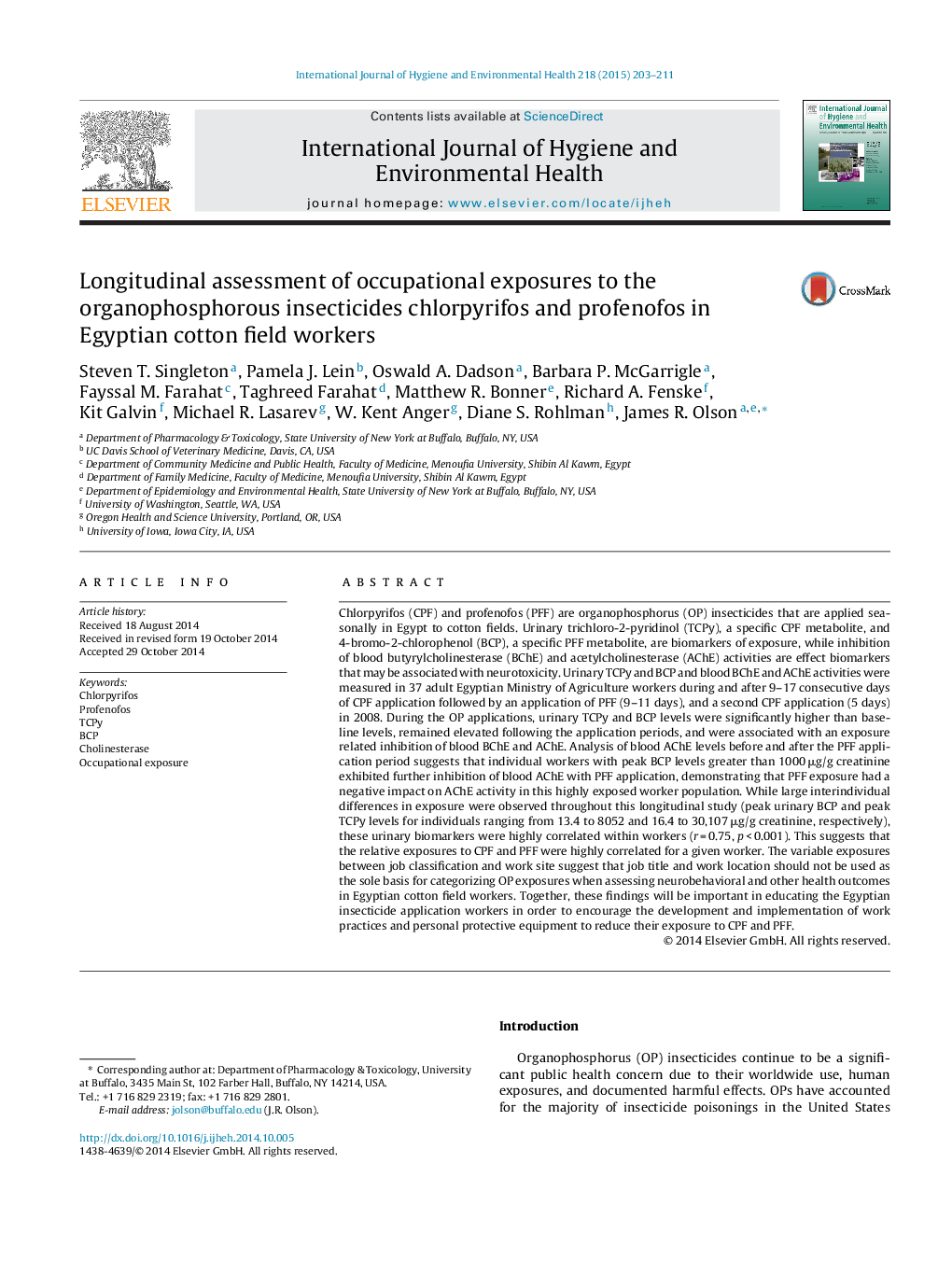| کد مقاله | کد نشریه | سال انتشار | مقاله انگلیسی | نسخه تمام متن |
|---|---|---|---|---|
| 2588461 | 1561892 | 2015 | 9 صفحه PDF | دانلود رایگان |
Chlorpyrifos (CPF) and profenofos (PFF) are organophosphorus (OP) insecticides that are applied seasonally in Egypt to cotton fields. Urinary trichloro-2-pyridinol (TCPy), a specific CPF metabolite, and 4-bromo-2-chlorophenol (BCP), a specific PFF metabolite, are biomarkers of exposure, while inhibition of blood butyrylcholinesterase (BChE) and acetylcholinesterase (AChE) activities are effect biomarkers that may be associated with neurotoxicity. Urinary TCPy and BCP and blood BChE and AChE activities were measured in 37 adult Egyptian Ministry of Agriculture workers during and after 9–17 consecutive days of CPF application followed by an application of PFF (9–11 days), and a second CPF application (5 days) in 2008. During the OP applications, urinary TCPy and BCP levels were significantly higher than baseline levels, remained elevated following the application periods, and were associated with an exposure related inhibition of blood BChE and AChE. Analysis of blood AChE levels before and after the PFF application period suggests that individual workers with peak BCP levels greater than 1000 μg/g creatinine exhibited further inhibition of blood AChE with PFF application, demonstrating that PFF exposure had a negative impact on AChE activity in this highly exposed worker population. While large interindividual differences in exposure were observed throughout this longitudinal study (peak urinary BCP and peak TCPy levels for individuals ranging from 13.4 to 8052 and 16.4 to 30,107 μg/g creatinine, respectively), these urinary biomarkers were highly correlated within workers (r = 0.75, p < 0.001). This suggests that the relative exposures to CPF and PFF were highly correlated for a given worker. The variable exposures between job classification and work site suggest that job title and work location should not be used as the sole basis for categorizing OP exposures when assessing neurobehavioral and other health outcomes in Egyptian cotton field workers. Together, these findings will be important in educating the Egyptian insecticide application workers in order to encourage the development and implementation of work practices and personal protective equipment to reduce their exposure to CPF and PFF.
Journal: International Journal of Hygiene and Environmental Health - Volume 218, Issue 2, March 2015, Pages 203–211
